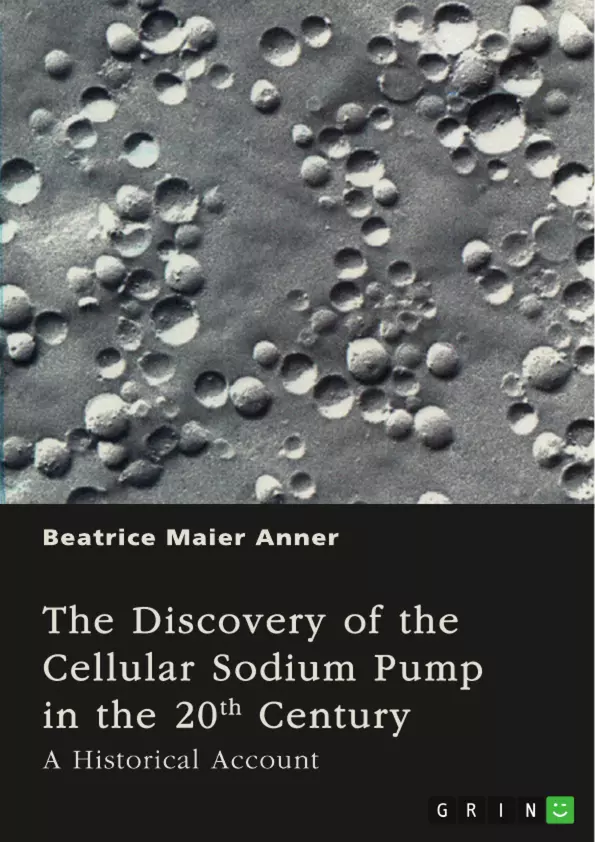During her doctoral and postdoctoral studies, Beatrice Maier Anner became familiar with a fascinating biological system, called sodium pump by the physiologists and Na,K-ATPase by the biochemists; it is a sort of biomotor located in the cell membrane, which constantly expulses sodium (Na) ions from the cell interior and replaces them by potassium (K) ions, at the expense of chemical energy provided by adenosine-triphosphate (ATP) which is cleaved to adenosine-diphosphate (ADP) by the Na,K-ATPase, which gets its pump energy from the cleavage of this chemical bond. There would be no life without this fundamental biological system. Interestingly, it is also a pharmacological receptor, i.e. compounds extracted from the Digitalis plant of from the toad bind to the pump and block it, hence the toxicity of e.g. digitoxin or the toad's bufotoxins. The author has acquired extensive practical and theoretical knowledge of this biological system, acquired at the Baylor College of Medicine, Houston, TX, USA consisting in inserting purified functional Na,K-ATPase into artificial membranes (liposomes) in order to study the pump activity on a molecular level. The present book is a unique historical overview from the discovery and purification of the sodium pump to its reconstitution in artificial membranes in the 20th century. This short book permits to become rapidly familiar with this fascinating biomotor and to find unique historical sources.
Inhaltsverzeichnis (Table of Contents)
- DISCOVERY
- PURIFICATION
- RECONSTITUTION
Zielsetzung und Themenschwerpunkte (Objectives and Key Themes)
This book presents a concise history of the discovery, purification, and reconstitution of the sodium pump, highlighting key milestones and individuals who contributed to this field. It aims to provide a comprehensive overview of the research conducted in the 20th century, culminating in the Nobel Prize awarded to Jens Chistian Skou in 1997 for his work on Na,K-ATPase.
- The historical discovery and characterization of the sodium pump.
- The development of techniques for purifying and isolating Na,K-ATPase.
- The reconstitution of functional Na,K-ATPase in artificial membranes.
- The significance of the sodium pump in cellular function and its role as a biological engine.
- The impact of the sodium pump research on the understanding of membrane transport and cellular processes.
Zusammenfassung der Kapitel (Chapter Summaries)
- DISCOVERY: This chapter explores the early investigations into the sodium pump, focusing on the pioneering work of researchers like Hodgkin and Huxley who established its existence and its crucial role in nerve impulse transmission. It delves into the crucial contribution of Jens Christian Skou, who identified the enzyme responsible for the pump, later named Na,K-ATPase.
- PURIFICATION: This chapter delves into the development of techniques for isolating and purifying Na,K-ATPase from various sources. It highlights the advancements in membrane fractionation, detergent use, and the use of affinity chromatography in achieving a high-purity preparation of the enzyme.
- RECONSTITUTION: This chapter examines the process of reconstituting the purified Na,K-ATPase into artificial membranes. It describes the methodology, the use of liposomes, and the resulting functional characterization of the reconstituted enzyme. It also explores the implications of this reconstitution for studying the pump's activity in controlled environments.
Schlüsselwörter (Keywords)
The key concepts and themes explored in this book are: sodium pump, Na,K-ATPase, membrane transport, nerve impulse transmission, enzyme purification, reconstitution, liposomes, biophysics, biochemistry, history of science, Jens Christian Skou, Nobel Prize.
- Quote paper
- Beatrice Maier Anner (Author), 2024, The Discovery of the Cellular Sodium Pump in the 20th Century, Munich, GRIN Verlag, https://www.grin.com/document/1450429



